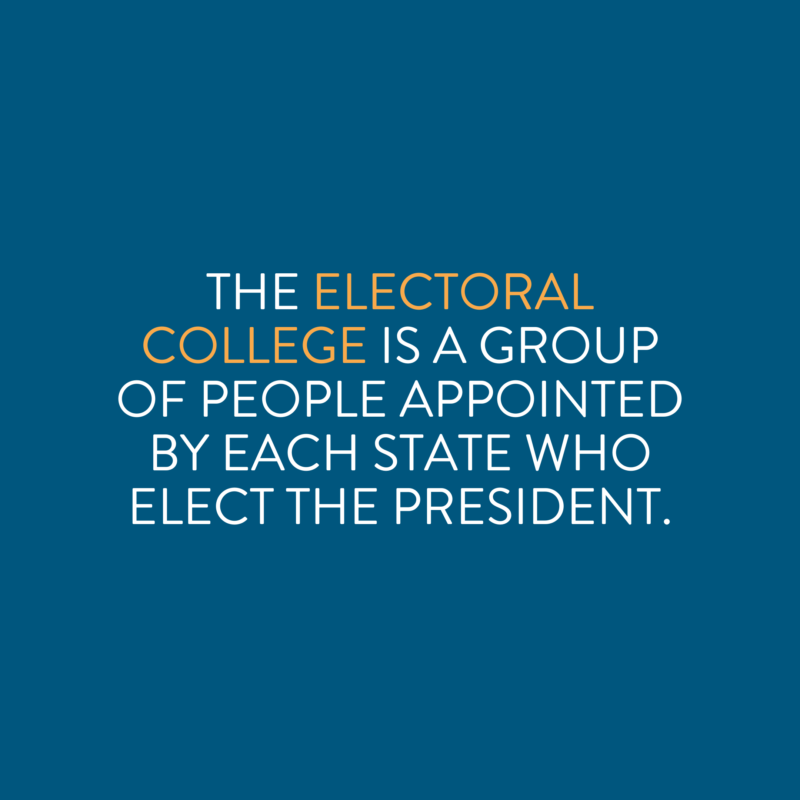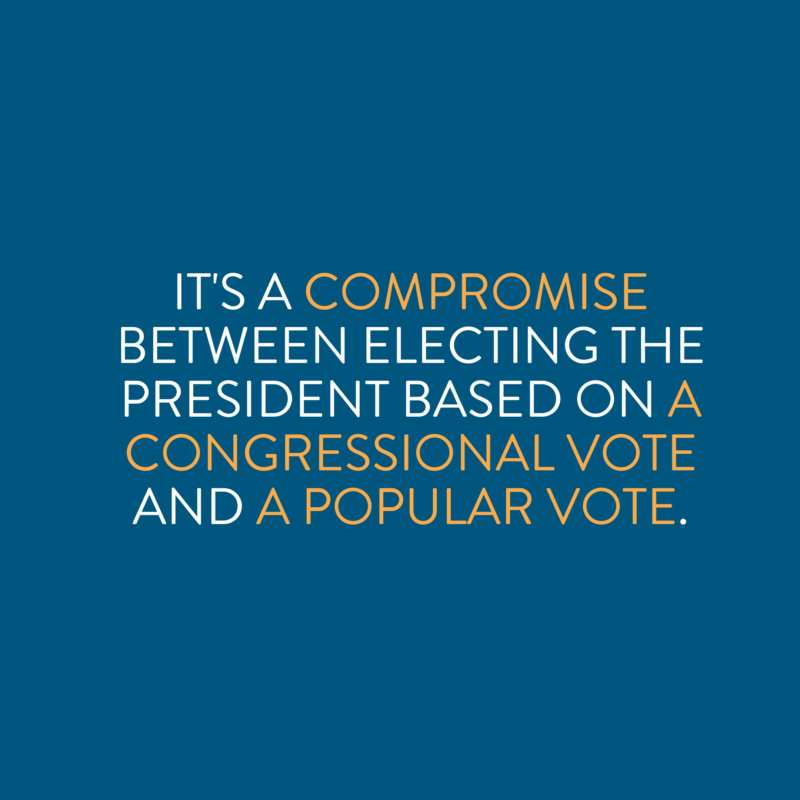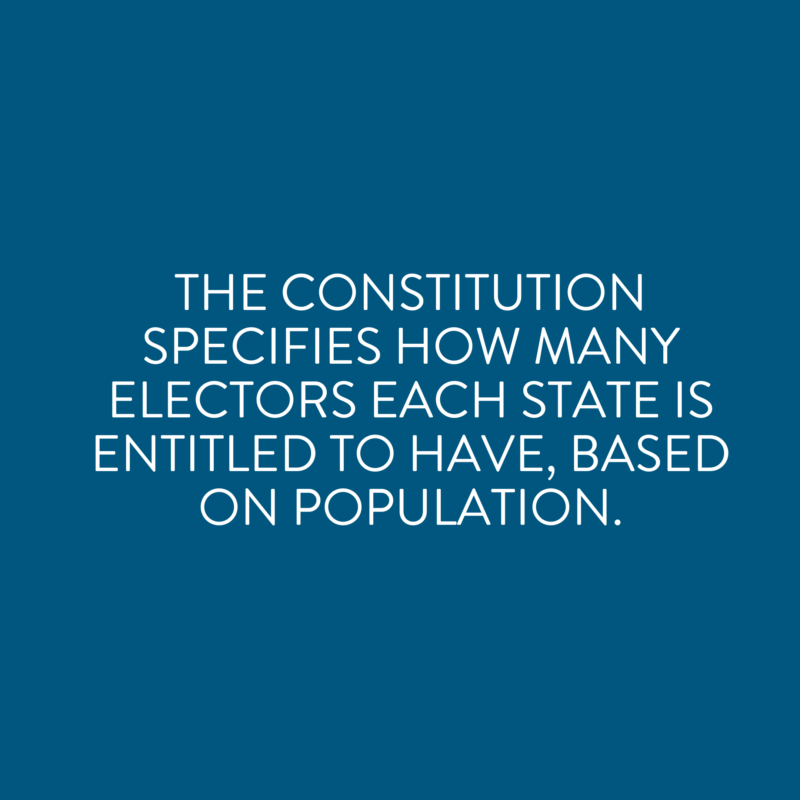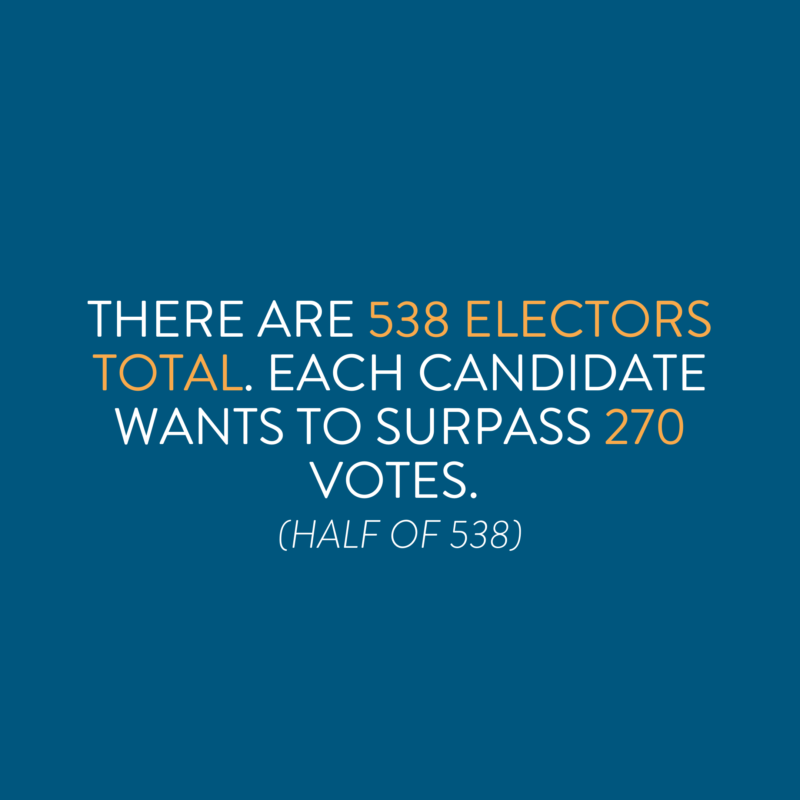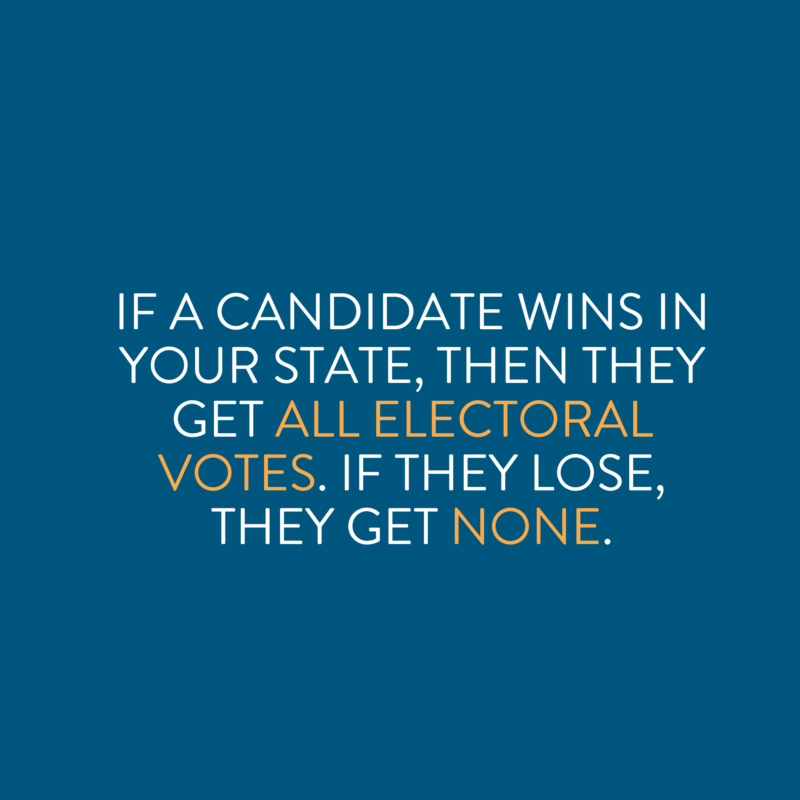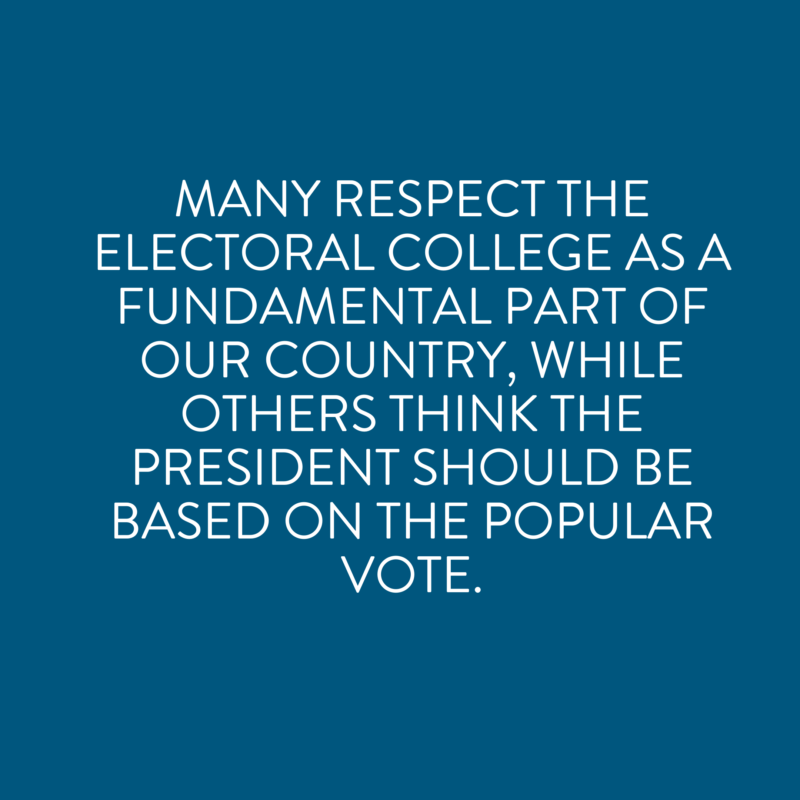
You’ve voted, but what’s next in our democratic process?
First, a little history. When American citizens cast their ballots by mail or on election day, they’re actually electing a body of people (electors) appointed by each state who then cast the votes that elect the President of the United States.
The number of electors from each state is roughly in line with the size of its population. Each state gets as many electors as it has lawmakers in the U.S. Congress (Representatives in the House and Senators in the upper chamber). California has the most electors – 55 – while a handful of sparsely populated states like Wyoming, Alaska and North Dakota have the minimum of three.
There are 538 electors in total. Each elector represents one electoral vote, and a candidate needs to gain a majority of the votes – 270 or more – to win the Presidency. Usually, electoral votes align with the popular vote in an election, but it is possible for a candidate to be the most popular among voters nationally, but fail to win enough states to gain 270 electoral votes. This has happened a number of times in America’s history, dating back to the 1824 election between John Quincy Adams and Andrew Jackson, and most recently in the 2016 election between Donald Trump and Hillary Clinton.
Why did the founders choose this system?
In the “Federalist Papers,” Alexander Hamilton writes that:
“the Constitution is designed to ensure ‘that the office of President will never fall to the lot of any man who is not in an eminent degree endowed with the requisite qualifications’.”
The Founding Fathers tried to ensure this by incorporating the Electoral College into the Constitution, and it has held as a key part of our nation’s democracy for over two centuries. Smaller states favored the system, as it gave them more of a voice than a nationwide popular vote would have in deciding the next President.
Why it Matters
As the Electoral College is a part of our Constitution, many respect it as a fundamental part of our country and believe it should not be changed. On the opposite end of the spectrum, many believe the winner of the national popular vote should always be the winner of the election. Although on the whole this has been a rare occurrence in our nation’s history, the fact that it has happened twice in the past two decades has brought the Electoral College to the forefront of election debates.
Ensuring the system that elects the president to office is fair and consistent is of the utmost importance to our democracy. Finding the proper balance of voter, state, and federal power in elections is not an easy task, but it is one that our country will continue to debate to protect our democracy and ensure all voices are heard.
Want to know more on how the Electoral College works, who can be an elector and possible areas for reform? Dive into the Policy Circle Brief to learn more.
The Policy Circle is a 501(c)(3), nonpartisan organization that provides pathways for women to become courageous, knowledgeable and active citizens who identify and take ownership of local solutions to the issues facing their communities. Please consider supporting our mission and developing your own leadership skills by becoming a financial supporter.
Want to share your Policy Circle story? Email us at communications@thepolicycircle.org to learn how to get involved. And follow us on social: Facebook, Instagram, Twitter and LinkedIn.
